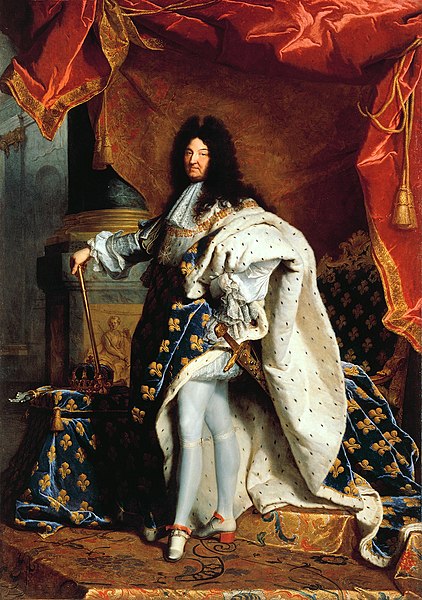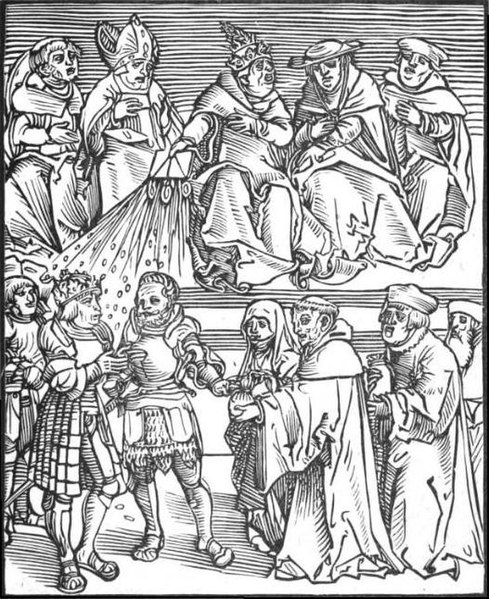Absolutism (European history)
Absolutism or the Age of Absolutism is a historiographical term used to describe a form of monarchical power that is unrestrained by all other institutions, such as churches, legislatures, or social elites. The term 'absolutism' is typically used in conjunction with some European monarchs during the transition from feudalism to capitalism, and monarchs described as absolute can especially be found in the 16th century through the 19th century. Absolutism is characterized by the ending of feudal partitioning, consolidation of power with the monarch, rise of state power, unification of the state laws, and a decrease in the influence of the church and the nobility.
King Louis XIV of France, often considered by historians as an archetype of absolutism
Image: Frederick II and eagle
Image: After Hans Holbein the Younger Portrait of Henry VIII Google Art Project
Image: Titian Portrait of Charles V Seated WGA22964
In European Christianity, the divine right of kings, divine right, or God's mandation, is a political and religious doctrine of political legitimacy of a monarchy. It is also known as the divine-right theory of kingship.
Ahura Mazda gives divine kingship to Ardashir.
Roger II of Sicily invested with kingship by Christ (mosaic of the Church of Santa Maria dell'Ammiraglio, Palermo)
Louis XIV of France depicted as the Sun King.
Antichristus, a woodcut by Lucas Cranach the Elder, of the pope using the temporal power to grant authority to a ruler contributing generously to the Catholic Church








